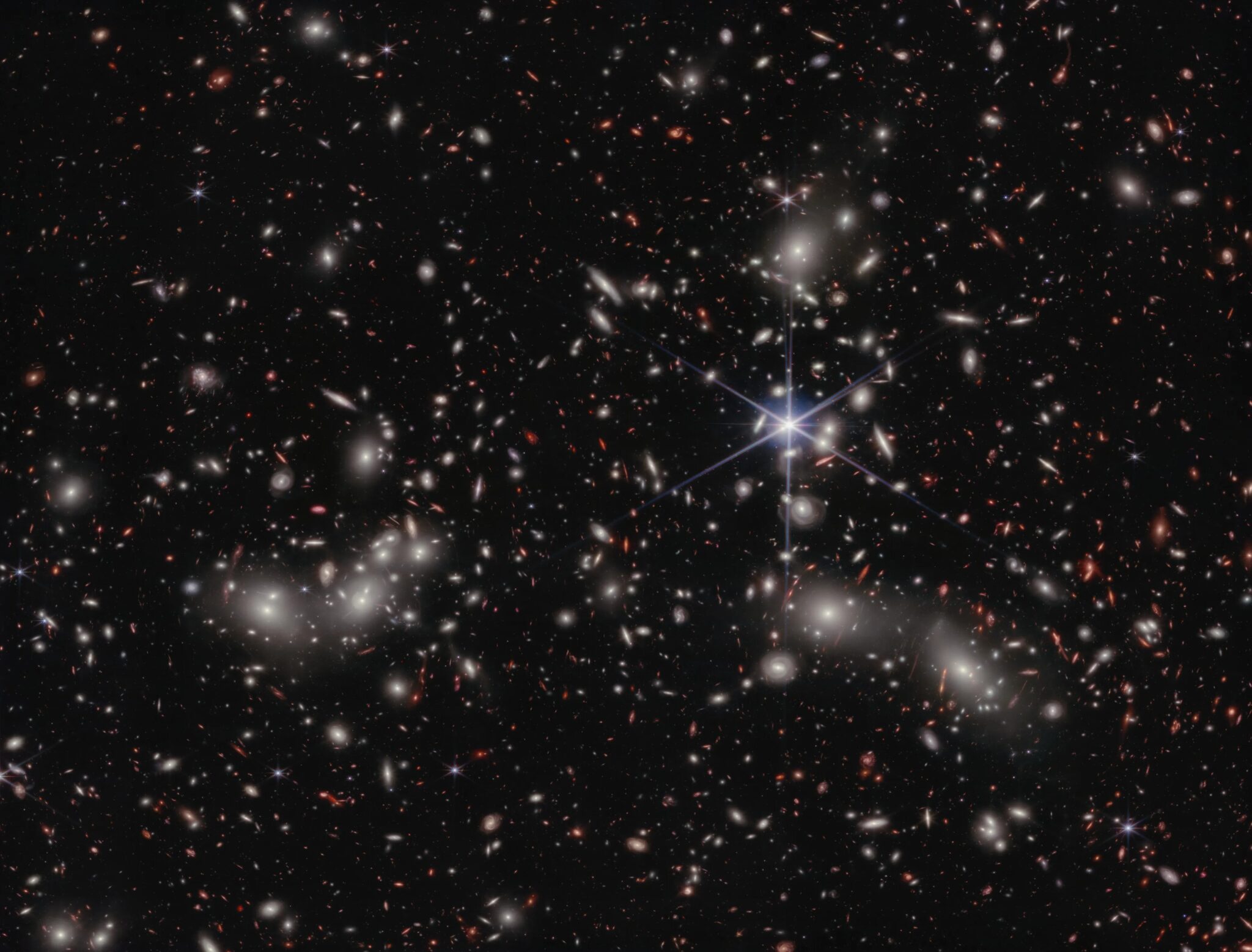Galactic clusters consist of hundreds or even thousands of galaxies held together by gravity. And there are megaclusters of galaxies — a cluster of clusters — which are among the largest objects in the Universe. James Webb shared with us a fresh photo of the Pandora megacluster in incredible detail. This cluster of galaxies is formed from three separate galactic clusters.

The Pandora cluster is already a cosmic superstar through gravitational lensing — a phenomenon that allows astronomers to use the galaxy cluster as a giant magnifying glass to view more distant objects behind it. According to NASA estimates, the image shows 50 thousand individual sources of infrared light, including many more distant galaxies that are visible due to the effect of gravitational lensing. The “lens” of the galactic megacluster is so massive that it distorts the very fabric of the space. These objects can be noticed if you take a closer look at the enlarged version of the image — on it, distant galaxies look somewhat distorted, acquiring an elongated and curved shape.
“When the images of the Pandora cluster first came from James Webb, we were honestly shocked. We saw so many details that we were even a little confused. The telescope has exceeded all our expectations,” said astronomer Rachel Bezanson from the University of Pittsburgh.
To get such a detailed image, James Webb needed about 30 hours of observations using a near-infrared camera (NIRCam). This is the first such detailed look at an intriguing area of space. Astronomers will make further observations to learn more about some of the lensed galaxies, providing scientists with a glimpse into part of the early Universe.
The image of the Pandora megacluster is a testament to the versatility of the NASA space telescope. Its photographs from remote corners of the Universe never cease to amaze us, and while we are fascinated by the incredible details of distant objects, scientists make sensational discoveries based on them. For example, thanks to James Webb, the most distant galaxy was discovered at the age of 13.5 years.
Earlier we reported that a treasure was found on the very first image of James Webb.
Follow us on Twitter to get the most interesting space news in time
https://twitter.com/ust_magazine

